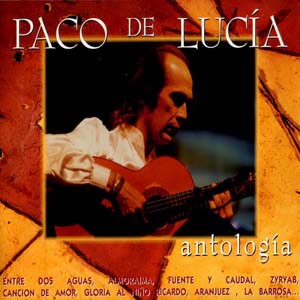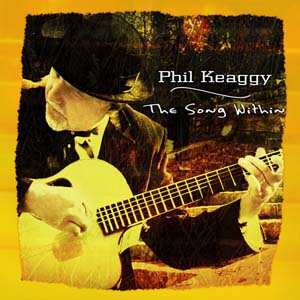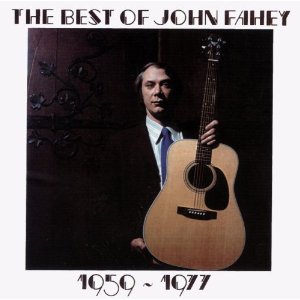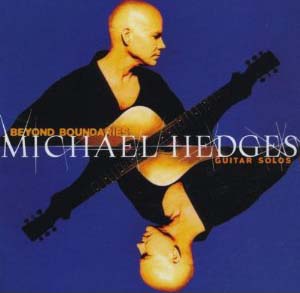Looking for a little inspiration? Here are some acoustic guitarists that you may not be familiar with, but have made a huge impact on the instrument and music in general. Watching these players in action will make you want to pick up that guitar and practice.
Paco de Lucia
No guitarist has done more to popularize modern flamenco guitar than Paco de Lucia has. A child prodigy, the gifted Spaniard mastered traditional flamenco techniques by his mid-teens, and went on to incorporate elements of jazz, salsa and bossa nova into flamenco’s deep roots. His work with jazz greats John McLaughlin, Al Di Meola and Larry Coryell at the turn of the ’80s – especially on the legendary album, Friday Night in San Francisco – remains essential for any student of acoustic guitar. – Russell Hall
Son House
Eddie “Son” House changed my life the first time I heard him play. I had never heard Mississippi Delta blues played with such stark intensity and poetic grace at the same time. His intense slide playing, rhythmic power, and searing vocals display what the blues is really all about, and he represents the very beginning of that unique legacy left by artists such as Robert Johnson, Charley Patton, Skip James and many others, who followed in his revolutionary blues footsteps. His “Death Letter Blues” alone is enough to convince you of his sheer power! – Arlen Roth
Buddy Miller
A soulful artist and versatile musician, Buddy Miller has worked with everyone from country great Emmylou Harris and R&B legend Solomon Burke to alt-country hero Lucinda Williams and rock god Robert Plant (not to mention his brilliant solo records and work with his wife Julie). Counting earthy production and clever songwriting among his many talents, Buddy might be at his best when he’s coaxing soothing tones from an acoustic guitar. Every single detail is there for the benefit of the song – never to show off. In doing so, he proves that he’s one of the best. – Bryan Wawzenek
Stephen Stills
Perhaps because Stills has created some of his finest work in collaboration with other gigantic talents, it’s sometimes too easy to forget what a phenomenally talented guitar player he is. The beauty and grace of “Suite: Judy Blue Eyes” alone is enough to rank him with the finest, but there’s also been tremendous range in his acoustic work, which can touch on country, blues, folk, Latin, and rock and roll influences while always sounding like no one but Stills. – Chuck Crisafulli
Martin Simpson
Martin Simpson sailed through the ’70s as the most prodigiously talented folk guitarist in Britain. He turned professional at just 15 and went on to work with everyone form Richard Thompson to Martin Carthy and the Albion Band. His jazz-influenced work with June Tabor is legendary. Equally at home with country blues, American styles as well as traditional English folk numbers, and he remains one of the most exquisitely tasteful masters of the non-electric axe in the business. – Andrew Vaughan
Phil Keaggy
Phil Keaggy is capable of both incredible speed and beautiful grace on either acoustic or electric guitar. Blending classical and Celtic influences, he is able to create an almost harpsichord-like sound with his bare hands while simultaneously coloring his chords and melodies with slides and harmonics, all while appearing almost completely effortless. Keaggy makes it look easy, whether he’s picking out a simple chord melody or unleashing two-handed tapping flourishes and ringing harp-like open string licks. – Peter Hodgson
Kaki King
At the ripe age of 31, Kaki King has already been hailed as a fingerstyle virtuoso on par with such giants as Michael Hedges, Alex De Grassi and Leo Kottke. Employing a percussive technique partially rooted in her background as a drummer, King elicits sounds from her guitar in ways that bring to mind a master painter working with an array of colors. Recent albums have seen her crafting beautifully melodic soundscapes using her strikingly original acoustic gifts. –Russell Hall
https://www.youtube.com/watch?v=AwkyDyyFrIc
Doc Watson
A major force on the mountain music scene in the ’50s, Doc Watson eventually shifted away from electric guitar to playing almost exclusively acoustic in 1960 just as the American folk music revival was really taking off. Watson’s major breakthrough happened thanks to his captivating and critically acclaimed performance at the Newport Folk Festival in 1963. A master flatpicker with speed to burn on the fretboard, Watson helped pioneer the lightning quick lead runs so prevalent in modern bluegrass guitar. – Sean Patrick Dooley
https://www.youtube.com/watch?v=YS9oRdOfGDI
Leo Kottke
Leo Kottke, the king of the 12-string, burst on the pop scene in ’69 with the trailblazing album 6- and 12-String Guitar. Whether working in jazz, pop or blues he became an in-demand picker for a slew of artists like Los Lobos, Emmylou Harris and Rickie Lee Jones. Kottke is a natural virtuoso and his ability to use that famous syncopated picking style to such beautiful effect in any style makes him one of his generation’s most important players. – Andrew Vaughan
Richard Thompson
Folk-rock legend Richard Thompson has such a wide musical vocabulary, his fingers might be the only ones capable of being able to work their way through 1000 Years of Popular Music. Most often relying on a hybrid picking technique – in which he plays bass and rhythm with a pick and plucks out melodies with his fingers – Thompson conjures what sounds like a full orchestra from a solitary acoustic guitar. Starting out in English folk group Fairport Convention, then forming a duo with his then-wife Linda Thompson, and going solo in the early ’80s, Richard has worked through a remarkable depth of styles – from middle age musical relics and traditional folk tunes to bluesy workouts and Britney Spears covers. His acoustic masterpiece, however, might be the haunting fingerstyle ballad “1952 Vincent Black Lightning,” a tingling epic that so perfectly exhibits Thompson’s many talents when showcased in one of his outstanding live performances. – Bryan Wawzenek
Andrés Segovia
Long considered a foundational pillar of 20th century classical guitar, Andrés Segovia was universally celebrated for his modern-romantic repertoire, his immense catalog of classical transcriptions for the guitar, and his extremely emotive and expressive performances. Segovia was unmatched in his ability to coax an endless phalanx of tones from his guitar, and his mastery of intricate chord phrasings was unparalleled. Born Andrés Torres Segovia on February 21, 1893 in Andalucia, Spain, Segovia studied with various flamenco players in his youth, as well as at the Paris Conservatory in 1915. His musical preference and style, however, would evolve away from flamenco and more toward expressive art-music. Segovia’s fingerstyle incorporated a combination of fingernails and fingertips, which produced a sharper sound; this technique is preferred by a majority of modern classical players. Segovia was also an early devotee of nylon strings over gut strings because of nylon’s superiority in maintaining stable intonation. – Sean Patrick Dooley
Bert Jansch
Scottish folk guitarist and singer songwriter Bert Jansch achieved international prominence with folk group Pentangle in the late ’60s and quickly became revered by critics and musicians. None other than Jimmy Page said of Jansch’s solo debut album: “I was absolutely obsessed with Bert Jansch. When I first heard that LP I couldn’t believe it. It was so far ahead of what everyone else was doing.” His distinctive clawhammer technique, liberal use of unusual chords and love for bending strings slightly sharp and flat give his style a sound all of its own. But he remains a massive influence; just ask Johnny Marr: “He completely re-invented guitar playing and set a standard that is still unequalled today… without Bert Jansch, rock music as it developed in the ’60s and ’70s would have been very different.” Neil Young recently brought Jansch out on tour and but for health issues Jansch would be a worldwide household name. Miss out on Jansch at your peril. – Andrew Vaughan
John Fahey
There wouldn’t seem to be any straight musical line connecting Mississippi Fred McDowell, Appalachian murder ballads, Bela Bartok and Balinese gamelan music, but in his brilliantly iconoclastic career, steel string great John Fahey found those kind of connections and made them sound stunningly natural. With masterful fingerpicking technique, a bold, swooping approach to slide work, some uncanny string-bending ability, and his own inimitable way of having a solo line jump forward, Fahey was a consummate player and a unique stylist. Fahey is sometimes heralded as a guitar “primitivist” because when he began recording in the ’50s and early ’60s, he focused his talents on reviving and celebrating the folk, blues and old-time sounds of traditional American music. But he was never merely a revivalist or a traditionalist, and while “primitive” might aptly describe his proudly un-hip artistic sensibility, it doesn’t begin to describe the fearsome dexterity he brought to the instrument. – Chuck Crisafulli
Adrian Legg
Steve Vai calls him “Uncle Adrian” and Joe Satriani just says, “He’s simply the best acoustic guitar player I’ve ever heard.” Londoner Adrian Legg has more technique in one finger than most of his peers have in all 10 and spent a large part of his career writing about acoustic playing for various guitar publications. His website is a wealth of information for anyone seeking expert advice and tips. Legg plays alternating bass fingerstyle and uses every technique under the sun from multiple hammer-ons to exquisite use of harmonics, banjo-peg retuning and single or double-string bending. But that’s just part of the picture; he’s also a terrific and off- the-wall entertainer, a witty raconteur and compelling performer and writer. – Andrew Vaughan
https://www.youtube.com/watch?v=cUpeQytOCLE
Tommy Emmanuel
Emmanuel is one of those rare guitarists who possesses so many incredible qualities, he’s almost impossible to define. All you can do is stand in awe of his massive talent. He seemingly can move from one extreme to another, stylistically as well as technically, with amazing ease. His talents seem best displayed with his solo acoustic work, where his thumbpick and three-finger approach is simply without peer, but he is also a fantastic electric player, and a wonderful entertainer as well! What I love also is how Tommy can be pure “flash” and excitement, but he can also turn on a dime, and play with warm and sensitive emotion. He can handle some of the most complex guitar arrangements with pure ease and passion, and few can ever duplicate what he can do in terms of playing several parts at once on the guitar. Truly a master guitar player of epic proportions! – Arlen Roth
Robert Johnson
One of the all-time guitar greats, the bluesman to top all bluesmen might be the most influential guitarist in music history. Seemingly all players praise this king of the six-string, whose amazingly complex technique and soulful delivery continue to amaze more than 70 years after his death. When Rolling Stones axeman Keith Richards was first introduced to the long-gone musician’s recordings, he reportedly asked, “Who is the other guy playing with him?” Of course, it was just Johnson on the recording. “I was hearing two guitars, and it took a long time to actually realize he was doing it all by himself,” Richards said. But Johnson was just as admired by his contemporaries, who marveled at not just his skill, but his versatility to play country, jazz and slide guitar. Johnson was so good, a rumor developed that he sold his soul to Satan in exchange for his musical prowess. How many guitarists can claim a legend like that? – Bryan Wawzenek
https://www.youtube.com/watch?v=-P4WhmJt9XM
Michael Hedges
It’s one thing to be a remarkably accomplished instrumentalist – it’s another thing to almost completely reinvent the way in which your instrument is played. The classically trained Hedges was pioneering in his approach to the acoustic guitar, using hammer-ons, pull-offs, harmonic slaps, alternate tunings and more to create a whole new vocabulary of sound for the instrument. In fact, there are still plenty of Hedges admirers valiantly trying to figure out how in the world he could pull bass lines, lead lines, moving chords and percussion parts all at once out of a single guitar. Hedges would loom as a guitar giant on technique alone, but the music he created was also extremely beautiful and deceptively playful (he wasn’t above slipping the lick from “In-A-Gadda-Da-Vida” into an otherwise delicate melody). Hedges died in a car accident in 1997 at age 43. He remains a deeply missed talent whose exceptional music stands as an artistic challenge and a soulful inspiration to anyone who picks up a guitar. – Chuck Crisafulli
Chet Atkins
Inspired by Merle Travis, Chet Atkins took fingerstyle guitar to new heights. As a live and session player in Nashville, he had no equal. Atkins would pick a bass line with his thumb on the lower strings and fingerpick melodies and harmonies with his other four fingers. The intricate way he did this, seemingly so effortless, influenced thousands – from Scotty Moore, Eric Johnson and Lonnie Mack to Mark Knopfler, Eric Clapton, George Harrison and Albert Lee – but none could ever duplicate Atkins’ dexterity or musicality. He also understood the changing music industry and moved into production early on, working on Elvis, among others for RCA. His adoption of strings in country music refined the Nashville sound and country music’s ’60s crossover success. But it was as a picker that Atkins really defined himself and felt happiest. Knopfler called him the best guitarist in the world. – Andrew Vaughan
Django Reinhardt
Belgium-born Jean “Django” Reinhardt was one of the earliest prominent jazz musicians in Europe, and he will forever reside on the very top-tier of the pantheon of great jazz axemen. Born to a musical family on January 23, 1910 in Liberchies, Pont-a-Celles, Belgium, Reinhardt’s youth was spent in various Gypsy encampments near Paris. He started playing violin, guitar and banjo at an early age – the earliest recordings of Reinhardt are from 1918, and he’s playing banjo – and by his teens he was supporting himself entirely through his music. Reinhardt’s lifelong wizardry on the acoustic guitar was all the more amazing considering the horrific burns he received over much of his body, including his left “fret” hand, when his home went up in flames. The third and fourth fingers of his left hand were partially paralyzed, yet after rehabilitation he was able to adjust his playing style to use his two good fingers predominately and his damaged fingers to make chords. A number of Reinhardt compositions remain jazz standards, including “Djangology,” “Swing 42,” “Minor Swing” and “Nuages.” – Sean Patrick Dooley
https://www.youtube.com/watch?v=Hq0tPjdfHME


















